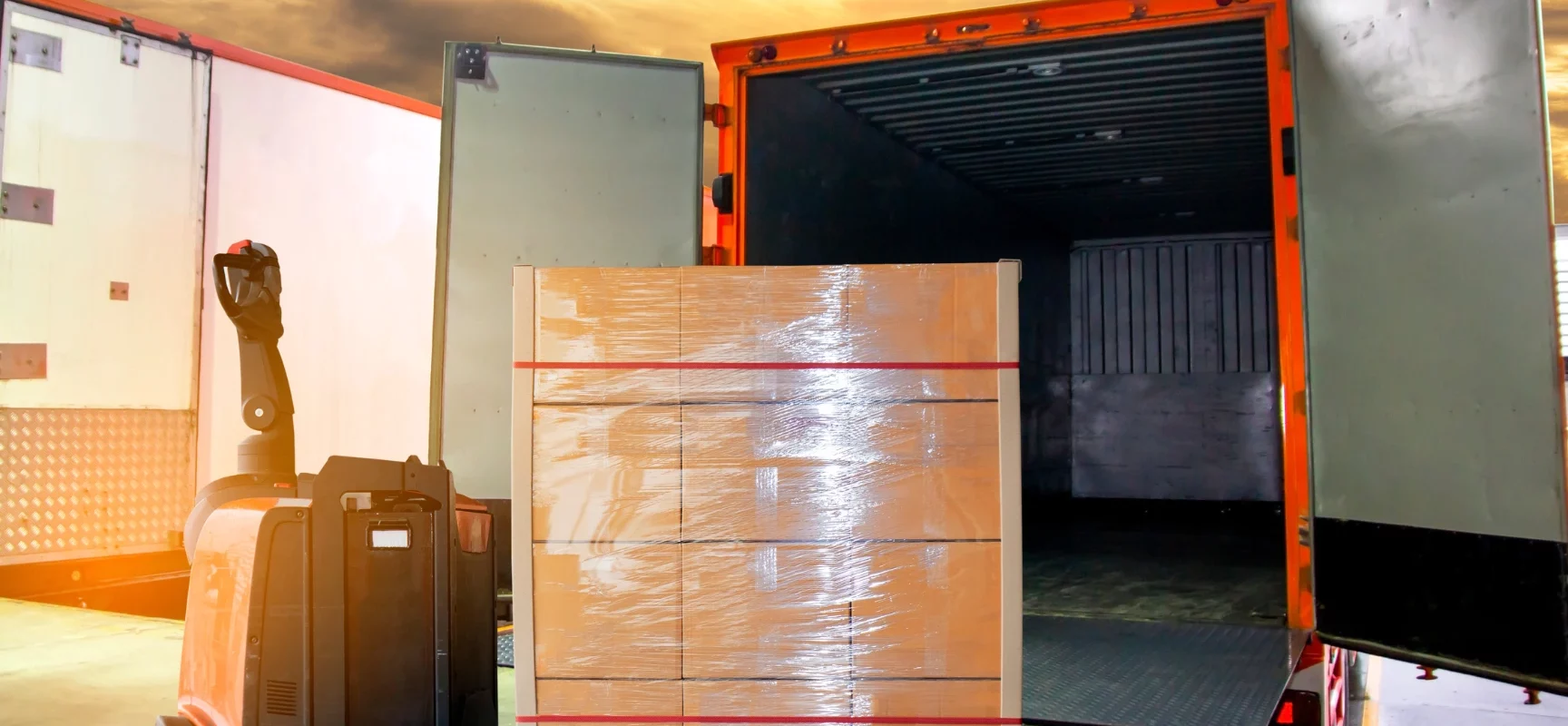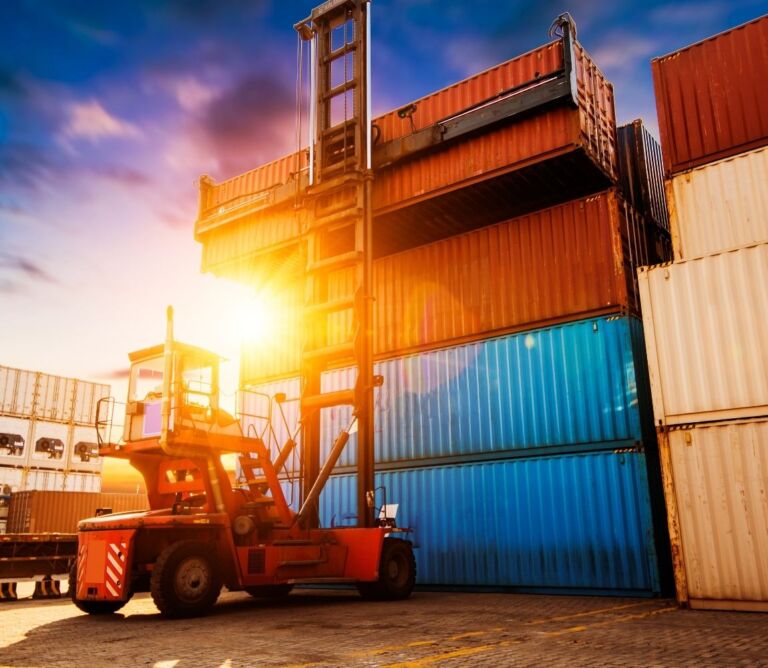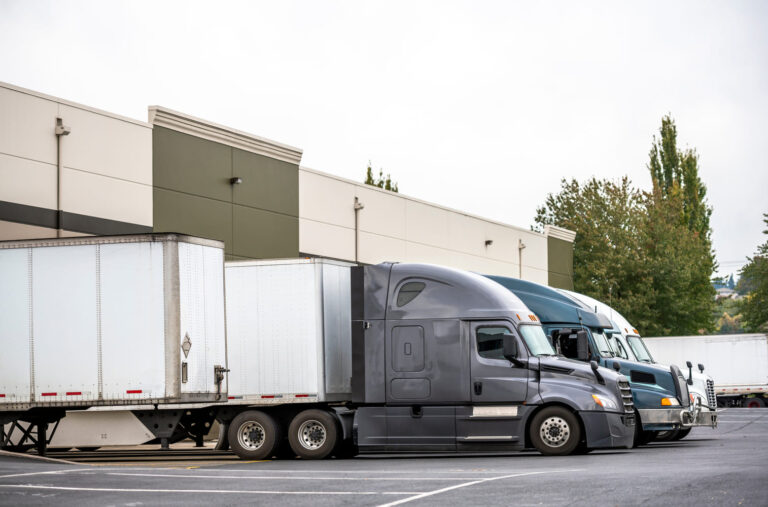The Ultimate Guide to Cross-Docking: Definition, Types and Benefits

Cross-docking is a logistics strategy where products from inbound vehicles are immediately transferred to outbound transport with little or no warehousing. In other words, goods “cross the docks” at a specialized facility instead of entering long-term storage. By minimizing handling and storage time, cross-docking accelerates delivery and reduces supply chain costs. For example, a cross dock facility might receive full truckloads of goods, sort them by destination, and reload them onto delivery trucks within minutes. This process speeds up shipments for time-sensitive items (like fresh food or retail merchandise) and lowers the need for large warehouse space. Modern cross dock warehouses are often I-shaped facilities near ports or hubs, with multiple inbound docks on one side and outbound docks on the other to enable a continuous flow.
Cross-docking enables goods to move quickly through a logistics hub instead of sitting in inventory. As one definition notes, cross-docking “involves moving goods directly from inbound to outbound carriers at a distribution center, requiring little or no need for warehouse storage”. In practice, a cross-dock warehouse functions as a specialized facility (often called a cross-dock facility or warehouse) where incoming freight is immediately redirected onto new trailers. This eliminates extra steps like unloading into shelving and later picking for shipments. The result is faster delivery, reduced labor, and lower storage costs. Cross-docking is now used by many retailers, manufacturers and carriers that need to meet tight delivery windows and keep inventory levels lean.
Types of Cross Docking
Cross-docking can take several forms depending on when and how goods are sorted. The two basic categories are pre-distribution and post-distribution cross-docking:
- Pre-distribution Cross Docking: The final destination of each product is decided before it arrives. In practice, a supplier provides shipment instructions to the cross-dock facility, so that when goods arrive they can be unloaded and immediately reloaded onto the correct outgoing truck. This minimizes any need for storage and works well when order destinations are known in advance.
- Post-distribution Cross Docking: The destination of goods is determined after they arrive. In this method, inbound shipments are held briefly at the cross-dock warehouse until final orders or demand data arrive. Then the goods are sorted and loaded for delivery. This adds flexibility for adjusting to demand changes, but requires more sophisticated sorting systems and a bit of short-term staging.
Beyond these timing categories, cross-docking is also classified by the handling process:
- Continuous Cross Docking: Products flow continuously through the facility with virtually no storage time. Trucks line up on one side to unload and re-load simultaneously on the other side. This is ideal for high-volume, consistently demanded goods (such as supermarket produce) and requires tight coordination so that goods move through without delay.
- Consolidation Cross Docking: Multiple small inbound shipments are collected and merged into larger outbound loads. In this method, goods may wait briefly at the cross-dock warehouse until enough material has arrived to fill a full truck. The focus is on reducing shipping costs by creating full-load shipments. Common users include less-than-truckload (LTL) carriers and freight consolidators who combine loads before further distribution.
- Deconsolidation Cross Docking: A large inbound shipment is split into smaller outbound shipments. This is essentially the reverse of consolidation: for example, a port container of mixed goods is received at a cross-dock and divided onto multiple trucks bound for different retailers or regions. Parcel carriers and large retailers often use this to quickly break down bulk shipments into store-specific deliveries.
How Cross Docking Works
A successful cross-docking operation follows a tight workflow with advanced coordination. Typically the process involves these steps:
- Inbound Reception: Delivery trucks arrive at the cross dock facility. Goods are unloaded at the inbound docks and quickly sorted by destination or product type.
- Transfer and Sorting: Products are moved (often by conveyor or forklifts) to sorting areas. There is little or no storage shelving – items are staged just long enough to be redirected. In some operations, barcode scanners and warehouse management software track items in real time.
- Loading Outbound: Sorted goods are immediately loaded onto waiting outbound trucks. Proper scheduling and dock-door planning are critical so that incoming and outgoing vehicles arrive in sync.
- Departure: Once loaded, outbound trucks depart. The cross-dock warehouse is ready for the next inbound shipment.
Efficient cross-docking requires a well-designed facility and systems. Maersk notes that optimal warehouse layouts (U- or I-shaped) minimize travel distance, and automation (conveyors, sorters) can speed movement. Real-time IT systems and trained staff are also important to coordinate the high-volume, fast-paced transfers.

Benefits of Cross-Docking
Implementing cross-docking delivers several key advantages for supply chains:
- Faster Shipping: By bypassing long-term warehousing, goods move quickly from supplier to customer. This accelerates lead times and helps meet urgent demand. For example, supermarkets use cross-docking to keep fresh produce moving without delays.
- Cost Reduction: Cross-docking slashes storage and handling costs. With less need for warehouse space, companies spend less on rent and shelving. Labor costs drop since workers only transfer pallets directly between trucks instead of warehousing and picking them. Transportation efficiency also improves; for instance, consolidating loads in cross-docks can lower freight expenses.
- Lower Inventory Levels: Less time in storage means companies can operate with smaller inventories. This reduces capital tied up in stock and minimizes risks of overstock or obsolescence. Cross-docking “minimizes or eliminates the need for warehouse storage” and optimizes inventory control.
- Centralized Operations: Cross-docks often serve as central hubs where goods are sorted and combined. Centralization allows better load consolidation (full truckloads) and fewer miles traveled, which can also reduce carbon emissions. This streamlined flow improves quality control and responsiveness compared to dispersed warehousing.
- Reduced Damage and Spoilage: Fewer touches and less storage time mean lower risk of product damage. Perishable items benefit greatly: since they move quickly through the supply chain, there is less chance of spoilage.
Overall, cross-docking can dramatically increase supply chain agility and cost-effectiveness when executed well.
Challenges and Risks of Cross Docking
Cross-docking also presents challenges that must be managed:
- Supply Chain Timing: The biggest challenge is synchronizing inbound and outbound schedules. Delays or early arrivals can create bottlenecks. If an inbound truck is late, outgoing shipments may have to wait, disrupting flow and negating time savings. Cross-docking relies on precise timing; any supply chain disruption (weather, transit delays, sudden demand spikes) can have an immediate impact since there’s little inventory buffer.
- High Initial Investment: Setting up an efficient cross-docking system can require significant upfront costs. Facilities need specialized dock layouts, conveyor systems, and warehouse management software. Companies often invest in automation (robotic sorters, sensors) and logistics IT to handle the speed and volume. These technologies are expensive, though they usually pay off over time through efficiency gains.
- Demand Forecasting: With minimal storage on hand, accurate demand forecasting is crucial. Underestimating demand can lead to stockouts with no back-up inventory, while overestimating forces unnecessary storage. Cross-docking companies must have tight visibility into orders and forecasts, often using ERP or inventory management systems to stay informed.
- Coordination and Complexity: Cross-docking operations require close coordination among suppliers, carriers and warehouse staff. Each product may have different handling needs (e.g. cold chain for food, safety protocols for chemicals), so the staff must be skilled and processes well-defined. cross-docking adds complexity as volume and product variety grow, requiring trained personnel and strong quality controls.
Despite these challenges, most experts agree that the benefits can outweigh the risks when cross-docking is implemented carefully with the right partners and systems in place.
Compared to traditional warehousing, cross-docking focuses on speed over storage. In a traditional warehouse, goods may sit for days or weeks, providing a buffer against demand fluctuations. A warehouse’s role is inventory management and stockholding. Cross-docking, by contrast, is designed to get items through in minutes or hours. This “speed versus buffer” difference gives companies a competitive edge in fast-moving markets. The trade-off is that cross-docks require more sophisticated scheduling and potentially higher handling costs, whereas warehouses trade higher carrying costs for more flexibility.
Best Practices for Effective Cross-Docking
Supply chain leaders recommend several best practices to make cross-docking work smoothly:
- Facility Design: Optimize the warehouse layout for flow. A U- or I-shaped design with separate inbound and outbound areas minimizes travel distance for goods. Placing related products near each other and clearly marking docks can also reduce confusion.
- Dock Scheduling: Use advanced scheduling systems and RFID/barcode tracking. Assign dock doors strategically so that inbound and outbound trailers align in close proximity. This way, goods move directly across the dock without congestion. Avoid having inbound trucks waiting if possible – idle trucks waste time and money.
- Automation and IT: Invest in automation (conveyors, sorters, scanners) to speed material handling and reduce errors. Real-time warehouse management systems (WMS) and transportation management systems (TMS) are essential for tracking each pallet and coordinating movements. These tools provide visibility into inventory levels and shipment status.
- Staff Training: Cross-docking requires a well-trained workforce. Staff should know how to quickly sort goods, operate equipment, and follow safety protocols. Frequent training and clear standard operating procedures help maintain speed and accuracy.
- Quality Control: Even though goods spend little time in the facility, advise implementing checks at receiving and shipping points. Quick inspections can catch damaged or mislabeled items before they enter the flow. This maintains customer satisfaction despite the faster pace.
By carefully planning the layout and processes, companies can “minimise distance” goods travel and handle peak volumes without delays.
Cross-Docking Facilities and Services
A cross dock facility is essentially a specialized warehouse designed for speed. These facilities are usually located near major transportation hubs (airports, seaports, or along highways). Their defining feature is the dock setup: one side of the building has inbound doors, the other side outbound. This architecture (often I-shaped) maximizes throughput, allowing many trucks to use the docks simultaneously.
Inside, there is minimal racking or storage space. Instead, you’ll see long conveyor belts or wide forklift aisles and large staging areas. Goods are labeled and staged by destination rather than by product type. Because of this, some people call cross-docking a form of “just-in-time warehousing.” It is still warehousing in the sense that products pass through a building, but it’s far different from conventional storage.
Cross docks often offer cross-docking services as part of their 3PL offerings. Many third-party logistics providers and on-demand warehousing platforms advertise cross-docking services so clients can quickly redirect inventory. These services promise quick turnarounds (hours instead of days) and use technology to seamlessly integrate with shippers’ systems. By booking cross-docking services, companies can leverage existing cross-dock facilities rather than building their own. This enables even smaller businesses to benefit from faster, ‘flow-through’ logistics.
Industries That Benefit from Cross-Docking
Cross-docking is especially valuable in industries where speed and freshness matter. Key users include:
- Food & Beverage: Fresh produce, dairy and frozen items benefit from rapid transit. Cross-docking keeps perishables moving so they reach stores while still fresh. For example, incoming farm produce can be sorted and shipped the same day to grocery retailers, preserving quality.
- Retail & Consumer Goods: Big-box and e-commerce retailers use cross-docking for fast-moving merchandise. Seasonal goods, promotions, or high-turnover items can be delivered to stores quickly without accumulating in distribution centers. This reduces inventory holding costs and prevents stockouts on hot items.
- Automotive & Manufacturing: Car manufacturers and parts suppliers often use cross-docking to support just-in-time production. Parts arrive at the assembly plant just as needed, without sitting in storage. Likewise, international auto parts shipments may arrive in bulk and then be broken down and routed immediately.
- Pharmaceuticals & Healthcare: Urgent medical supplies and pharmaceuticals are time-critical. Cross-docking ensures that medicines and medical equipment move swiftly from factories to hospitals or pharmacies. This also reduces the handling of sensitive products.
- High-Tech & Electronics: Electronic goods (phones, computers, components) often launch with high demand. Cross-docking can quickly route these products from multiple suppliers into consolidated shipments for retailers, avoiding warehouse delays.
- Textiles & Apparel: Fashion goods that have short selling seasons can be cross-docked to get new collections to stores in a matter of days. This is vital when trends move fast and inventory must match demand.
In general, any business with high-volume or time-sensitive goods – from perishable food to fast-fashion apparel to critical parts – can benefit from the efficiency of cross-docking. By reducing storage time and speeding up distribution, cross-docking keeps supply chains lean and responsive.
Cross-Docking vs. Traditional Warehousing
It’s important to understand that cross-docks and warehouses serve different purposes.
- Storage vs. Flow: Traditional warehouses are designed for holding inventory. They provide buffer stock to protect against demand spikes or supply delays. Cross-docks, conversely, are designed for immediate flow-through. The goal is zero or minimal storage.
- Inventory Management: In warehousing, you manage receipts, putaways, picking and stock control. Cross-docking simplifies this by cutting out most warehousing steps. Inventory in a cross-dock is almost entirely short-term and tightly scheduled.
- Speed: Cross-docking dramatically shortens lead times. A warehouse adds days or weeks of storage time.
- Cost Structure: Warehouses incur storage rent, inventory carrying costs, and labor for order picking. Cross-docks shift costs towards transportation coordination and technology. While you save on space, you may invest more in real-time systems and scheduling.
- Flexibility: Warehouses offer flexibility to handle unexpected changes (extra inventory when needed). Cross-docking systems are less flexible to sudden disruptions, since they rely on precise planning. A delay in inbound supply can cause immediate stock shortages in a cross-dock model.
In summary, cross-docking gives a competitive edge in speed and cost when demand is stable and speed is critical. Warehousing is better suited when storage buffers are needed. Many companies use a hybrid approach: they warehousing slower-moving items while cross-docking high-turnover, time-sensitive goods.
Frequently Asked Questions (FAQ) – OLIMP Warehousing
Q: What does “cross-docking” mean in a warehouse context?
Cross-docking means unloading goods from incoming vehicles and immediately transferring them to outbound vehicles. The aim is to keep items moving through the warehouse with minimal storage. In practice, products might be sorted by destination and reloaded onto trucks in the same facility rather than being shelved.
Q: What is a cross-dock facility?
A cross-dock facility is a specialized warehouse with designated dock doors for incoming and outgoing freight. It is typically organized to support a continuous flow of goods. Unlike a traditional warehouse, it has minimal racking and is laid out for fast transfers. Many cross-dock facilities are located near ports, airports, or rail terminals to facilitate quick turnarounds.
Q: How do cross-docking services work?
Cross-docking services are offered by 3PLs or warehouse providers who manage the cross-docking process on behalf of clients. These services include receiving shipments, sorting them, and loading out to carriers. Customers pay for the quick throughput instead of paying long-term storage fees. Using cross-docking services helps businesses reduce warehousing needs and get products to market faster.
Q: Which businesses benefit most from cross-docking?
Businesses with high-volume, fast-moving, or perishable goods gain the most. For example, grocery suppliers, large retailers, automotive parts distributors, electronics companies, and e-commerce fulfillment centers all use cross-docking to streamline operations. Essentially, any company needing to move products quickly to customers or stores—without delays—is a good fit for cross-docking.In conclusion, cross-docking is a powerful logistics strategy that “streams supply chain” by speeding deliveries and cutting storage costs. By understanding the different types (pre/post, continuous, consolidation, deconsolidation) and following best practices (facility design, scheduling, technology), businesses can leverage cross-dock facilities to stay agile and efficient. Companies looking for rapid distribution often book specialized cross-docking services or on-demand cross dock warehouses to tap into these benefits.Whether you operate a retail chain, food distribution network, or manufacturing supply line, integrating cross-docking into your logistics can be a game-changer. Evaluate your inventory flows and consider where “just-in-time” transfers could replace costly storage.
You may be interested in

How to Choose a Transloading Provider Near Major Ports
International trade flows through U.S. container ports have exploded in recent years. According to the U.S. Department of Transportation’s Port Performance Freight Statistics Report, the ports of New York/New Jersey, Los Angeles and Long Beach each handled more than 6 million loaded twenty‑foot equivalent units (TEUs) in 2022, while Savannah processed 4.33 million TEUs. The […]

What Is Transloading? (Meaning & Process Explained)
Transloading means moving freight between different modes of transportation, for example, unloading goods from a ship’s container and loading them onto a freight train or truck. In practice, transloading allows importers, exporters and freight forwarders to mix and match trucks, trains, ships or planes so each leg of the journey uses the most efficient mode. […]

Dock-to-Dock Delivery: A Comprehensive Guide
Dock-to-dock delivery means shipping goods straight from one loading dock to another with no intermediate stops. In other words, a shipment is picked up at the origin dock and delivered directly to the destination dock, bypassing extra handling or storage. This direct approach cuts out delays and extra labor – making deliveries faster, cheaper, and […]
Ready to streamline your warehousing needs?
Request a quote today and discover how OLIMP's tailored solutions can optimize your operations